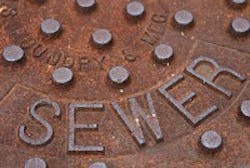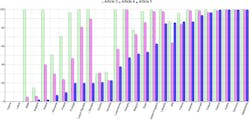Wastewater collection and treatment improvements in Europe, says EU report
Under EU legislation dating back to 1991, Member States are obliged to have systems for collecting urban wastewater, and they have to ensure that water entering collection systems undergoes appropriate ‘secondary’ treatment to remove pollutants.
Additionally, wastewater entering sensitive areas, such as bathing sites or drinking water reservoirs, must undergo further more stringent treatment.
The EU Commission’s Seventh Report on the Implementation of the Urban Waste Water Treatment Directive to the European Parliament is a measure of how each member state is progressing towards compliance with the Directive and covers the period 2009/2010.
The report measures the percentage of compliance that each country has achieved in wastewater collection (article 3), wastewater secondary treatment (article 4) and more stringent wastewater treatment (article 5).
According to the report, in the EU-15 average compliance rates in 2010 were 88% for secondary treatment and higher for wastewater collection systems and more stringent treatment at 97% and 90% respectively.
However, for the first time, the latest edition of the report features data sent from 27 Member States, covering almost 24,000 towns and cities of more than 2,000 inhabitants.
The findings showed that frontrunners such as Austria, Germany and the Netherlands largely meet EU minimum standards for wastewater treatment, with several other countries not far behind.
Compliance chart
Significant improvements
According to the report, despite a lower starting point and lower compliance rates, following EU investments totalling €14.3 billion between 2007 and 2013, newer Member States have also improved overall collection and treatment.
The report showed that the vast majority (91%) of the pollution load from the EU's big cities receives more stringent treatment, a considerable improvement on the situation in the previous report (77%).
In addition, the report found that better water treatment and fewer raw sewage discharges into the environment have also undoubtedly improved bathing water quality. In the early 1990s, only around 60% of bathing sites had excellent quality water, whereas today that figure is 78%.
Main findings:
- Collection rates were at a very high level, with 15 Member States collecting 100% of their total polluting load. All had maintained or improved previous results, although compliance rates remained below 30% in Bulgaria, Cyprus, Estonia, Latvia and Slovenia
- Compliance rates for secondary treatment are 82%, up four points since the previous report. However there were huge differences between the EU-15, where rates were in the range 90% to 100%, and EU-12, where average compliance was 39%
- Compliance rates for more stringent treatment to combat eutrophication or reduce bacteriological pollution that could affect human health were 77% overall. EU-12 Member States averaged only 14%, whereas Austria, Germany, Greece, and Finland reached 100 % compliance
- The share of EU territory designated as a sensitive area increased by two points since the previous report, reaching almost 75%. The biggest increases took place in France and Greece
- An annex to the report comparing the situation of 27 European capital cautioned that only 11 of the 27 had an adequate collection and treatment system in place – despite the fact that the standards were set more than 20 years ago.
"Wastewater treatment is one of those fundamental tests for society: are we cleaning up the mess we create, or are we fouling the environment we depend upon?” asked Environment Commissioner, Janez Potočnik.
“I am relieved to see the trends going in the right direction, and I am also happy to see that Commission action, a mix of financial support and tough legal action when necessary, has paid dividends for Europe's citizens," he concluded.
Read More
The EU’s Water Architect
The four member states of Belgium, Greece, Portugal and Spain have still not submitted River Basin Management Plans. Jeremy Josephs speaks exclusively to EU Commissioner for the Environment Janez Potocˇnik to discuss why and the imminent EU's Water Blueprint.

